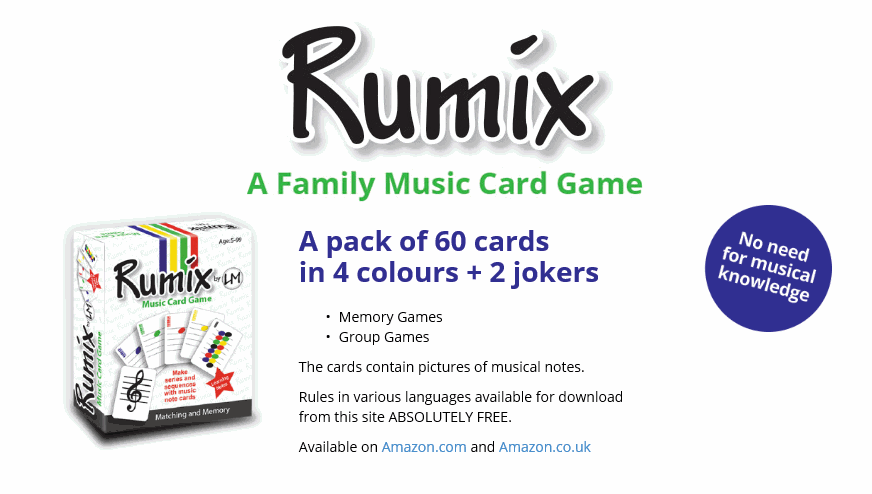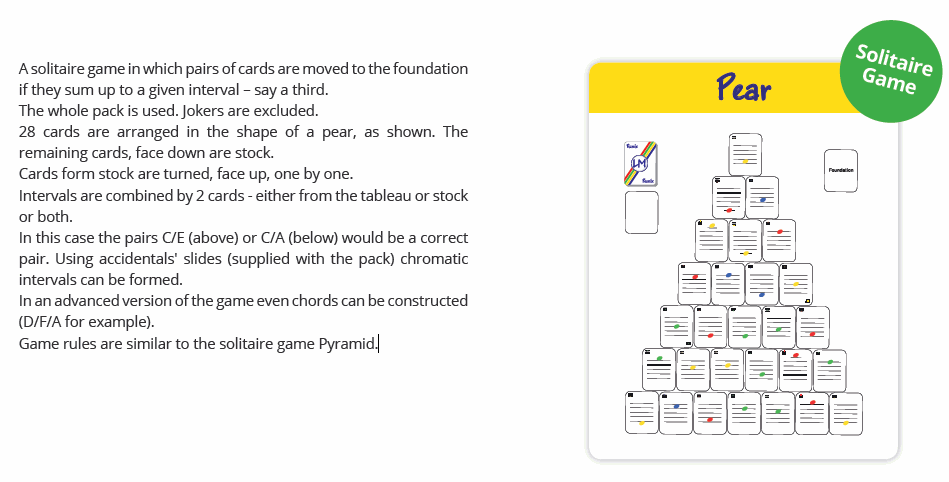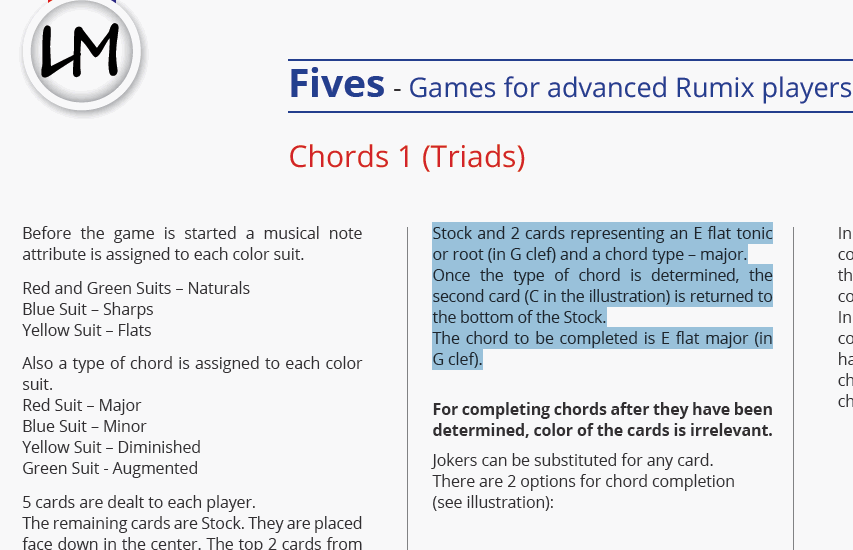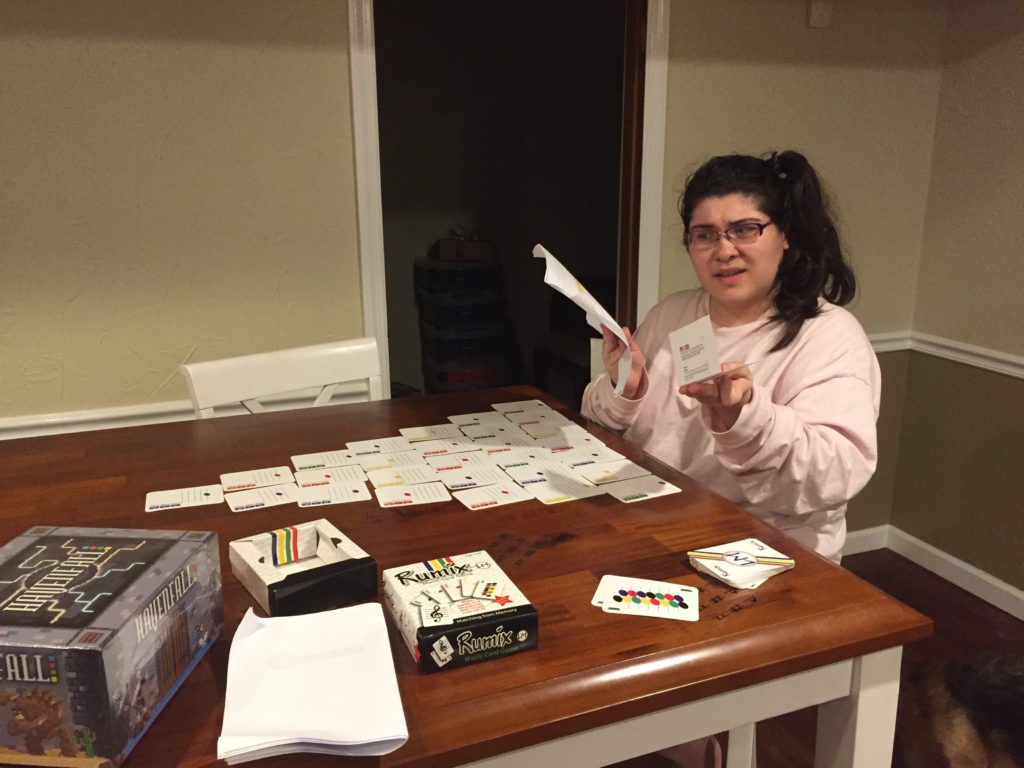I love music. It’s gotten me through some pretty tough times and is my go-to when I’m feeling depressed. Believe it or not I was in my elementary school’s choir as I equally enjoy singing, but I can’t read a musical scale to save my life. Sure, certain key concepts like FACE and EGBDF (every good boy does fine) has stuck with me, but I’m one of those people who labeled the keys on his electric piano and wrote down the letter sequence as I attempted to recreate songs I liked. Luckily, you (supposedly) don’t need to have any musical experience whatsoever to play “Rumix”, a musical card game that’s retailing on Amazon right now for $14.95. Before we untangle this unique treble clef (my favorite musical term even if I don’t know what it means), I’d like to thank Game Designer Maxim Levy for providing me with a press copy for review purposes. Per FCC Regulations I must also inform you that this article was sponsored, but my opinions are my own.

The card pack comes four suits of fifteen cards in four different colors, along with two jokers and two transparencies. There was NOT a rulebook, rather a separate pamphlet that said that I could download the rules for free via the official website. How lazy is that? When it comes to how to play…well, the rules advertise six different games – four group and two solitaire. To keep the review flowing I won’t be listing all of them out, but I do want to touch on the ones that I enjoyed playing. You can download the rules on the official website should you want to see everything that the game has to offer.
—
Pairs – Group Game
“Pairs” is your classic game of memory. Players can choose as many cards as they wish to shuffle and deal face-down onto the table, then attempt to uncover/pair them two at a time. Kids of a younger age can start with as few cards as the parent deems appropriate and eventually work their way up to the entire deck.
Rumix – Group Game
“Rumix” reminds me of Rummy. Essentially, players lay down combinations of cards from their hand in an attempt to empty it. Players who have laid a combination can then start adding to existing combinations (even rearranging them) to be the first one to have an empty hand.
—
As musically themed as the game is, the “digital” rulebook is absolutely horrid. It’s just too vague and leaves out important details, like how many players can play in each of the group games. The official website lists that no musical knowledge is required, yet the rules list musical terms that would cause a newcomer like me to shake their head in confusion. Take the directions for “Pear”…the first sentence of the directions state, “A solitaire game in which pairs of cards are moved to the foundation if they sum up to a given interval – say a third.” Okay, so what’s an interval? I had to Wiki it…
“In music theory, an interval is the difference between two pitches. An interval may be described as horizontal, linear, or melodic if it refers to successively sounding tones, such as two adjacent pitches in a melody, and vertical or harmonic if it pertains to simultaneously sounding tones, such as in a chord.” – Did that clear it up for you? Didn’t think so.

What’s a C/A? What’s a C/E? What’s a third? *Sigh*
ProTip: If you’re going to claim that no musical knowledge is required to play your game, make sure to include a glossary of terms somewhere in the rulebook AND lay out your directions in a layman way to where they are easily understood. Otherwise, you’re catering to a niche audience. Note I included the word “supposedly” in parenthesis in my opening paragraph…this is why.
On that same page, the last sentence states, “Game rules are similar to the solitaire game Pyramid.” Wonderful…what if you have never played “Pyramid”? Maybe I’m a special case, but read the above rules for “Pear” and tell me you clearly understand what the rules are supposed to be? What in the world is a chromatic interval anyway? I’d Wiki it, but I’m too fed up at this point.
In the past I’ve covered games that have taken the time to educate players on the science of the subject matter. “Xtronaut Enterprises Constellations – the Game of Stargazing and the Night Sky”, to name one example, has pages and pages dedicated to teaching the player as to what a constellation is. Something like that here would have gone a long way…instead, the developer of this game doesn’t even address the difference between a G Clef and an F Clef. Don’t ask, I don’t know what it is.

“Rumix” is a neat idea, but the execution falls incredibly short for my tastes. This game was frustrating to learn and admittedly, I didn’t even bother playing the games for advanced players. The whole point of this hobby, at least for me, is to have fun learning and playing the game. It’s with sad regret that I have to report that neither condition was fulfilled in this case. If the developer seriously wants to improve on his creation, then release how-to-play videos for EACH of these games AND overhaul the “digital” rulebook. I own close to 500 tabletop games and 99% of them have a printed manual. Sure most people have internet access nowadays but c’mon.
While the cards are of nice quality, I just didn’t “get” this game. Maybe I’m a special case and everyone else will…I just know that this is a case where the expert knows what he’s talking about but fails to convey it clearly to the layman. I gave the cards and the directions for “Pear” to Aidalee (who is a classically trained pianist) and she had no idea what to make of them. In her words, “This could have been such a neat little game, it’s just a shame that the directions are explained so poorly.”
If you’d like to take the plunge you can buy it yourself for $14.95.
Final Verdict: 2/10

